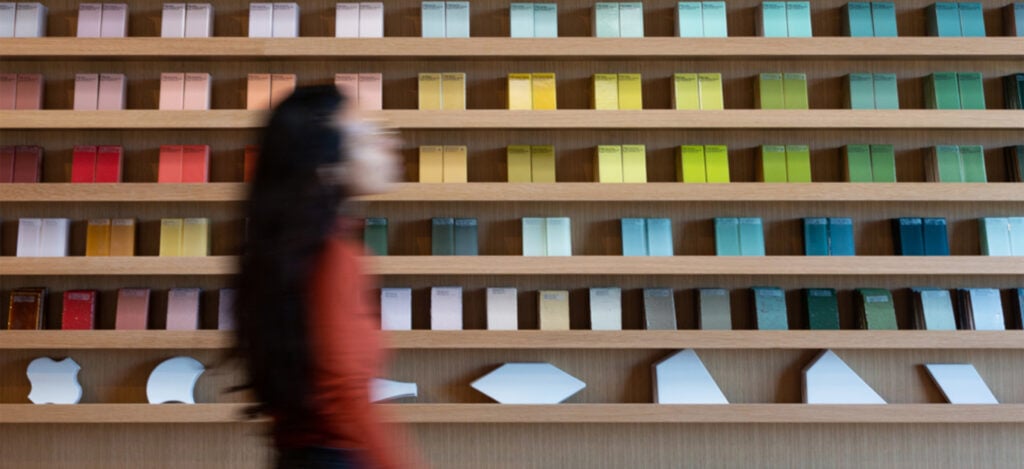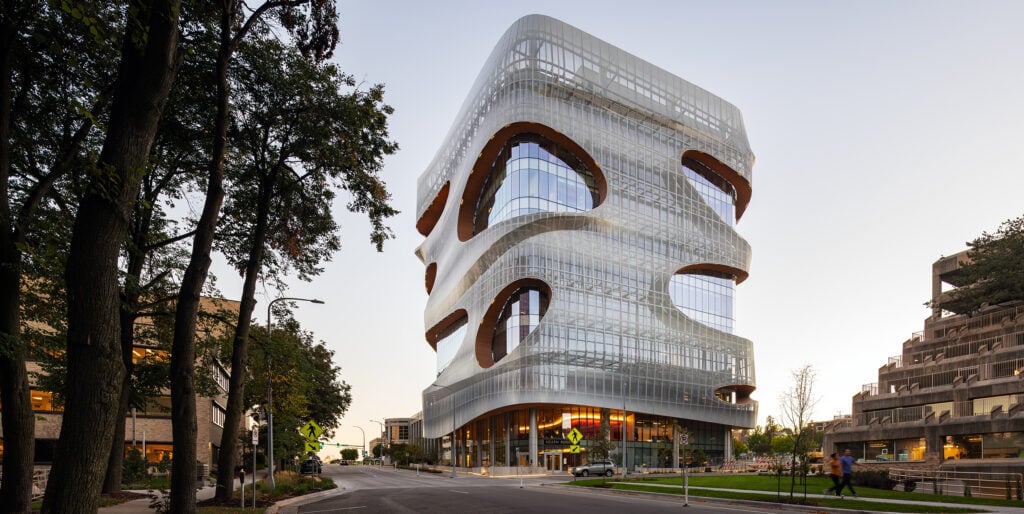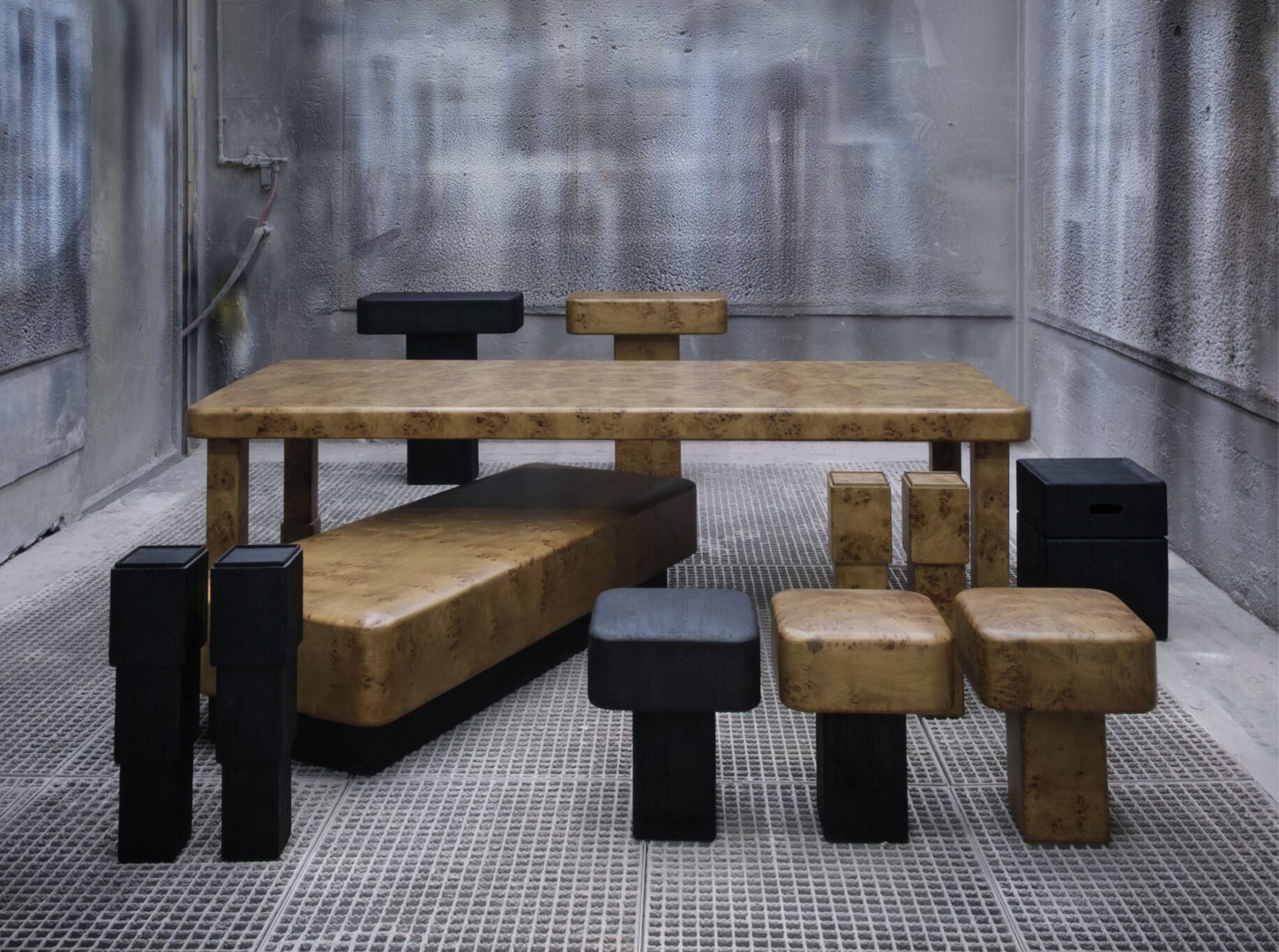
July 10, 2023
Brutalism is Echoing in Contemporary Furnishings
The monolithic scale, stark material expression, and unencumbered forms of some home furnishings recently seem to represent a fresh interest in New Brutalism. This is evident in items on view at a variety of trade shows, galleries, and exhibitions. Viewed together, the contemporary products are clearly rooted in a historic design mindset.
What’s in a Name?
New Brutalism as it emerged in the late 1950s and flourished in the 1960s was a period with principles, concepts, and attitudes. To call it an aesthetic, style, or trend is to undermine its cultural significance. However, Brutalism is the term often used to describe the look of the built work that followed. “It is a contrarian, direct, and anti-dogmatic modernist sensibility, not a style or a movement,” says critic, historian, and theorist Mark Linder.
Now designers are exploring what it means to create New Brutalist furniture, and in which ways a 21st century space can authentically embrace these tenets. Some say there’s an art to achieving the right mood. “It would be a shame if such an interior came to be thought of as something like the cold, authoritarian interiors that Ken Adam designed for the lairs of international criminals that James Bond had to overcome,” says Ben Highmore, author of The Art of Brutalism and professor of cultural studies at the University of Sussex. “If the term brutalism only tends towards the heavy, the austere, the serious, then it is missing a whole other side of. . . lightness and ease.”
Soft to be Strong
Demonstrating a command of this nuance are seven contemporary designers whose products seem imbued with New Brutalist ethos––concepts grasped by the eye and confirmed by the user experience. “On one hand it was about honesty of materials”, says Highmore before adding “while on the other hand, honesty has another connotation, meaning unpretentious or unfussed.”
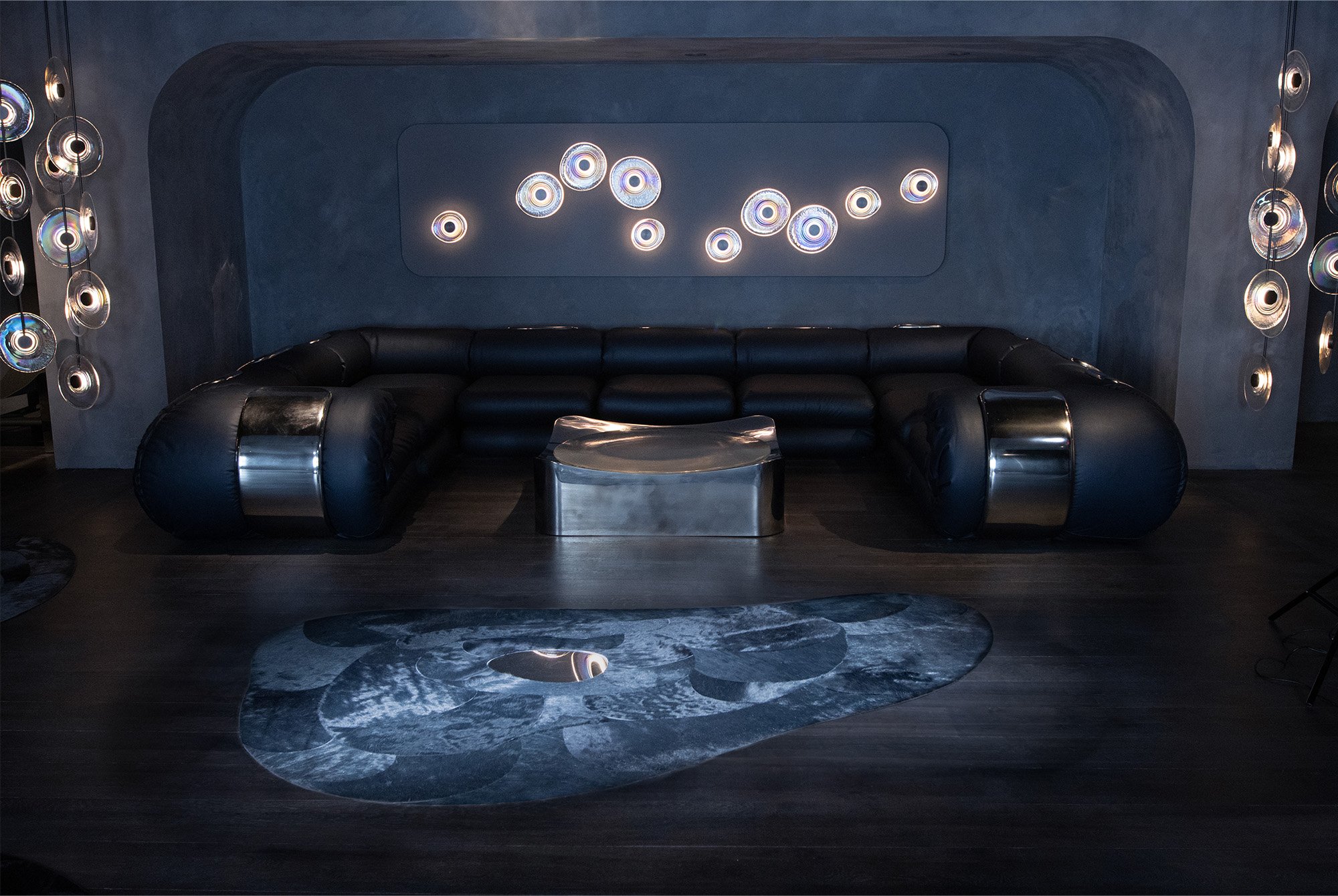
“The Fold Sofa system captures a dramatic interplay of organic materials. Soft forms are folded and juxtaposed with the constraint of curved metal. This organic process creates a natural bunching of leather, accentuating the tension between futuristic polished metal and matte, earth-toned leather. ”––John Pomp
Aptly referred to as “future primitive”, John Pomp’s Fold Sofa and Portal Rug Collection designed in collaboration with Kyle Bunting are exemplary of New Brutalism’s affection for primitivism. The pair share a unique dialogue in appearance, letting their materiality and construction reveal the logic behind their final forms. While the sofa folds in on itself to create the seating, the texture and direction of the hides comprising the rugs pull the user into an actual moment of reflection at the center. Sharing in this affinity for a clear visual identity is James De Wulf’s Exo Leaning Shelf, which has a sculptural form that is a direct translation of its functional performance. The rigid pillar-like central column is softened in appearance and made approachable by the three textured, cantilevered arms secured by gravity joints. Gil Melott’s Luz Sconce Series delivers a group of luminaries displaying a sliding scale of rawness and sensuality in their anthropomorphic forms, allowing them to be simple while avoiding popular clichés. Material and support structures speak for themselves.
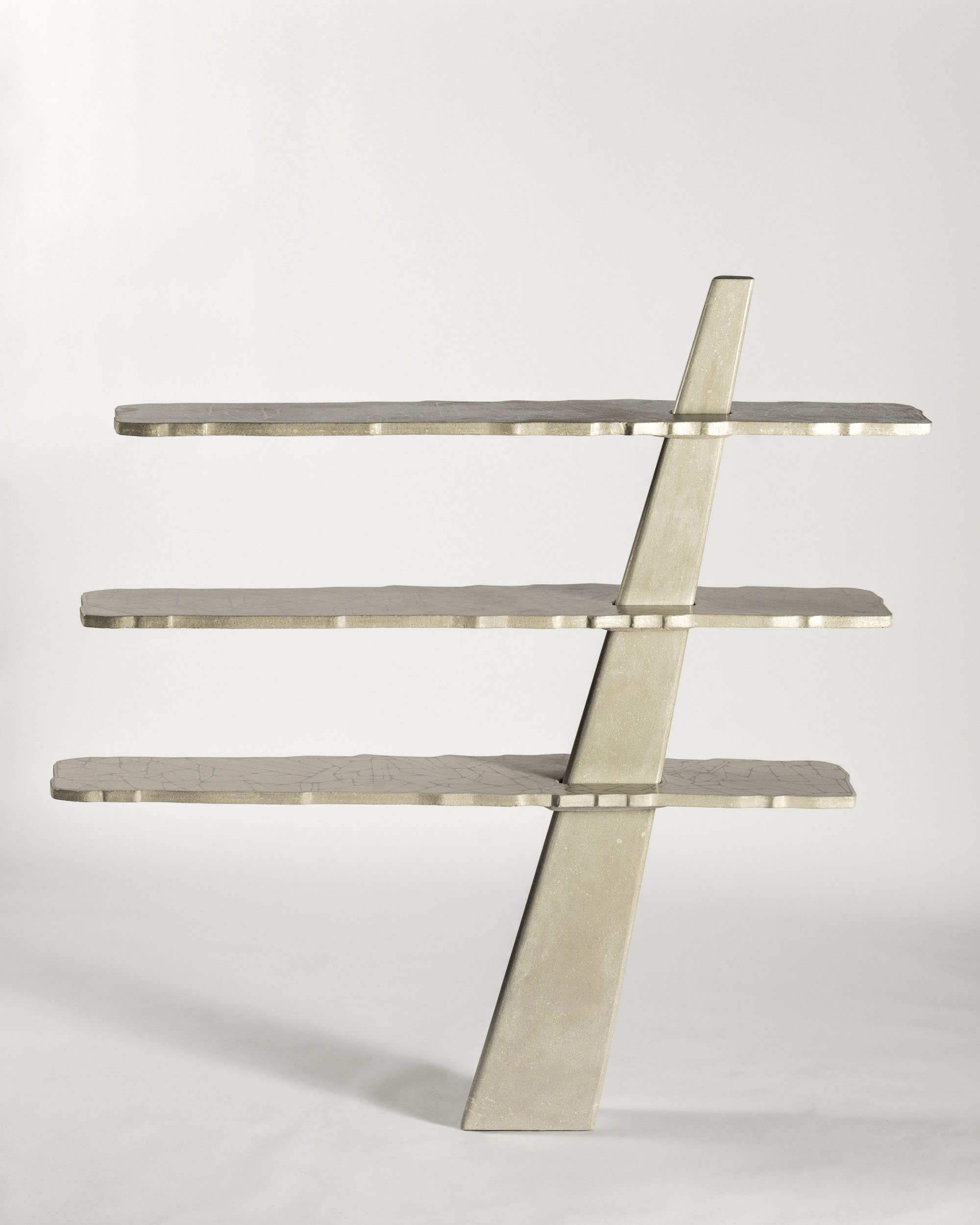
“After discovering the work of Angelo Mangiarotti I became obsessed with gravity joints and using the weight of the material appropriately in the designs of my pieces. The shape brings all the weight down to the center achieving shelf stability.” –James De Wulf
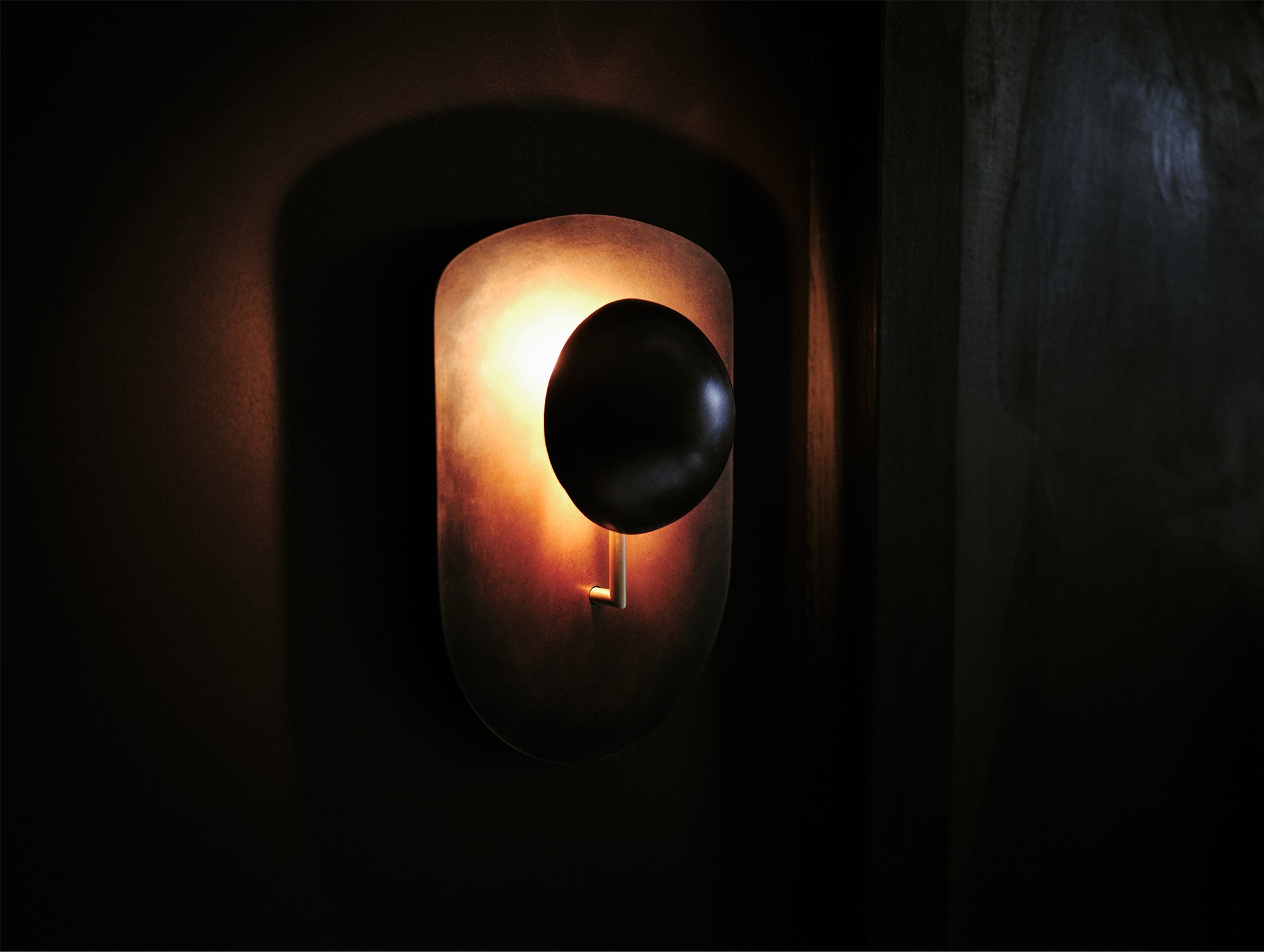
“I knew that a design stressing honesty in construction, leaving material and support structures exposed and undecorated, with a refined finish would belie the heft of the material of the hand cast bronze.” –Gil Melott
In stark contrast are a series of pieces that rely on the directness of scale and geometry to participate in New Brutalist discourse. The Platou Chair, borne from a collaboration by Bunn Studio and Radnor Made, is the antithesis of current trends in furniture design. Weight and scale are integral parts of the form’s overt structure and identity, made inviting by textiles and cushioning that are deceptively comfortable. In a similar play of restraint and richness, SANAYI313’s Oblong Collection leans into a maximalist expression with minimalist details transforming what could have been an overpowering dining set into something seductive that begs the user to stay.
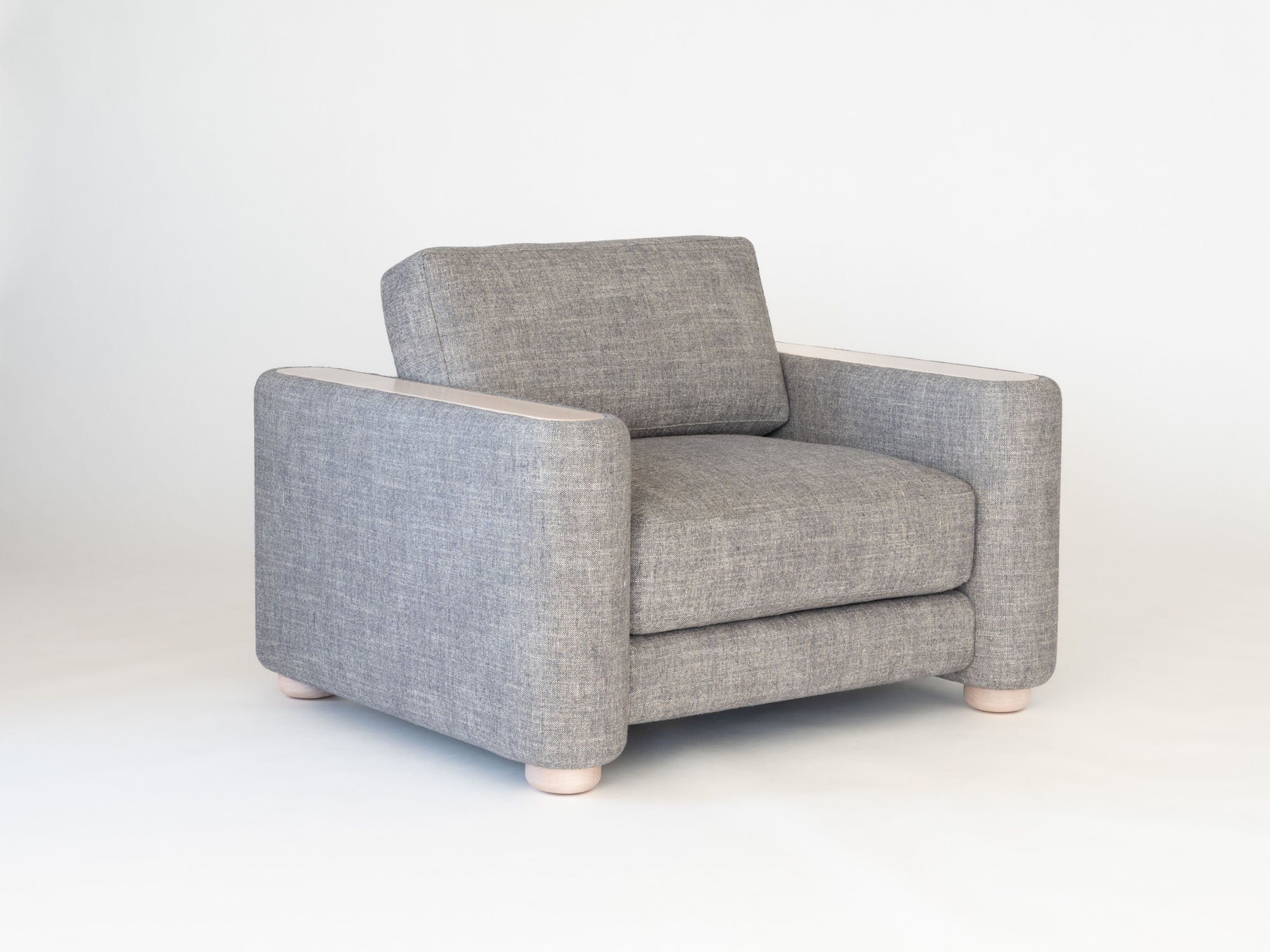
“The spark for the concept was a notion of opposition, to create a contrast to the minimal wave that has been surging and imbue an abstract value into the collection that generates a sense of heaviness and presence in a room.” –Bunn Studio
Noteworthy still is Jialun Xiong’s Half Table Lamp. New Brutalism distilled, the lamp’s authenticity is as striking as its appearance with a back-to-basics approach to lighting design, prioritizing materiality over color, and form over adornment. Its hardware gives cues to its kinetic functionality. “Brutalism is not really a definable term or style, but the kind of integrity it conveyed originally has renewed appeal in today’s bottom-up, socially mediated, everything-everywhere-all-at-once cultural ecosystem,” adds Linder. “It signifies a kind of unpretentious yet refined, seductive yet awkward, undisciplined yet sophisticated expression of a lifestyle that both capitalizes on and evades the estrangement and chaos of hyper-digital-virtual culture.”
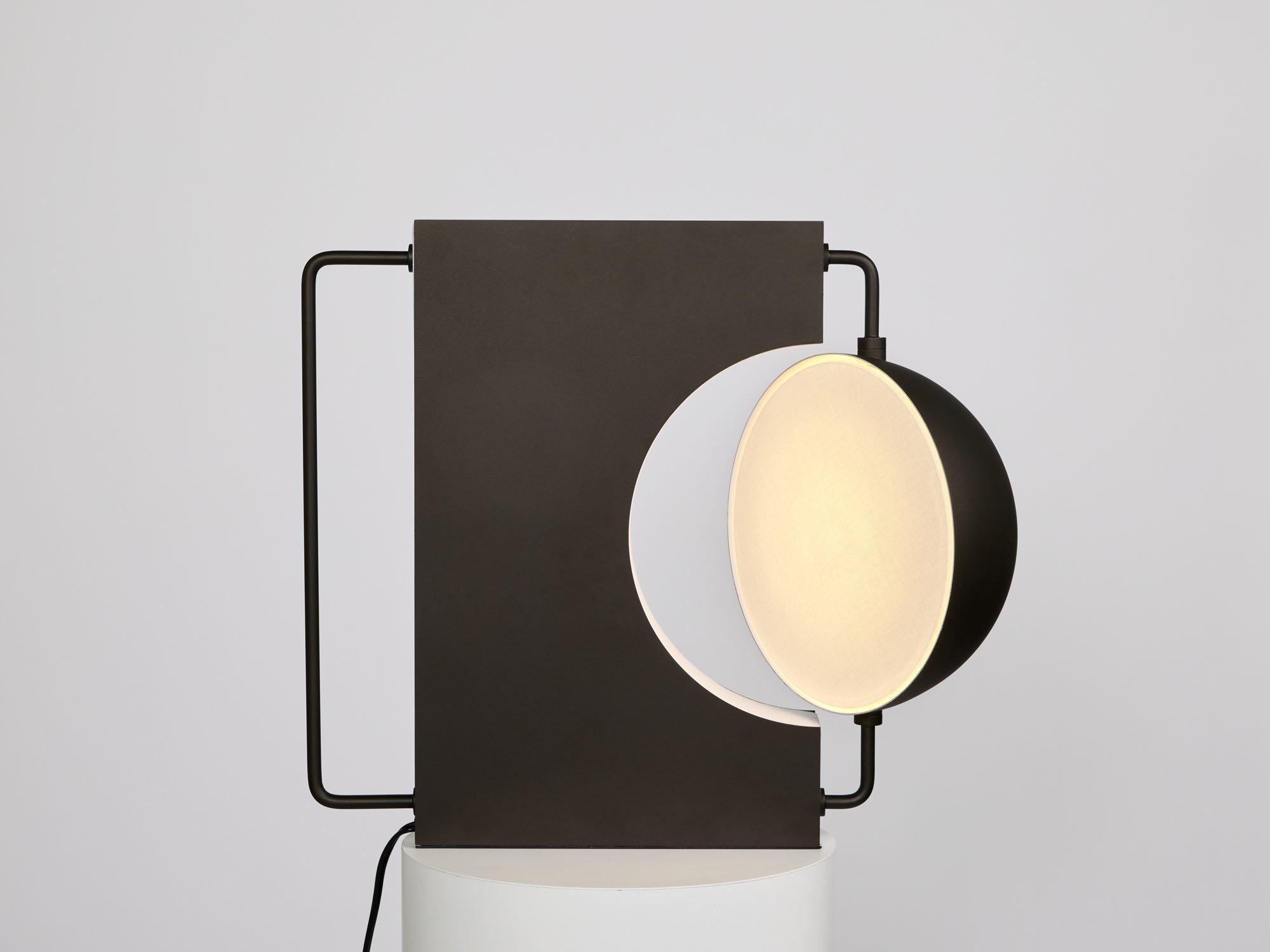
“I was inspired by the 3D modeling process, having removed all traces of color and embellishment. I liked that by removing the noise, it better emphasized my signature sculptural forms, and materiality.” –Jialun Xiong
Would you like to comment on this article? Send your thoughts to: [email protected]
Latest
Products
B Corp Brands Are Creating Design for a Fairer World
The third-party designation is transforming design by putting people on par with profit.
Viewpoints
Breaking the Workplace Mold: How Gen Z is Redefining Work for Everyone
ThinkLab’s Amanda Schneider delivers a TEDx Talk that challenges generational stereotypes and calls for a universal workplace shift.
Projects
HDR Wraps Mayo Clinic Lab in a Dynamic Double-Layered Facade
The building’s striking exterior reduces solar gain, while its “risk-based” interior zoning ensures efficiency in research.



